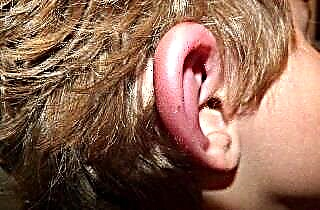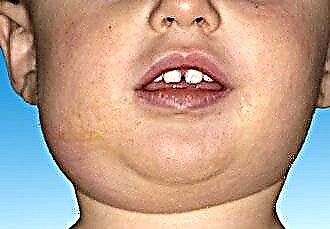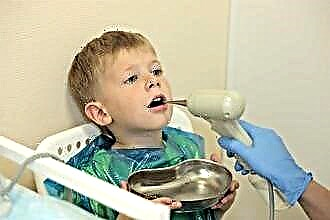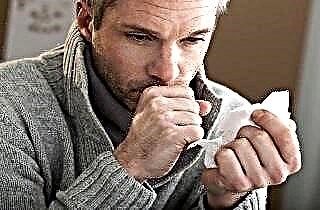You can injure your ear almost anywhere. Most often, this trouble happens in everyday life, at work, in transport, during sports, and so on.
As for the types of ear injuries, they are most often: mechanical, chemical and thermal. In a special category, there are injuries caused by: strong acoustic influence, vibration and changes in atmospheric pressure Let us consider in more detail acoustic injuries and injuries resulting from a shock - what symptoms they manifest and how they are treated.
Acoustic trauma
Such damage is possible under the condition of short-term or, conversely, prolonged exposure of the hearing organ to an excessively loud sound. Depending on the degree of impact of the traumatic factor, there are 2 forms of acoustic trauma: acute and chronic.
The acute form is characterized by a short-term influence of a high and ultra-strong sound (for example, an extremely loud whistle directly into the ear). The basis of the chronic form is the factor of fatigue (meaning the tiring effect of any sounds on the hearing aid).

Symptoms of Acute Acoustic Trauma:
- abrupt onset of hearing loss of varying degrees (a condition in which all sounds of the environment instantly "disappear");
- earache;
- a sudden sensation of ringing in your ears;
- dizziness (although it does not appear in all cases);
- Discharge of blood from the ear (usually seen in trauma from an explosion, which is accompanied by a ruptured membrane).
Chronic Acoustic Trauma Symptoms:
- significant decrease in hearing acuity or complete deafness;
- tinnitus felt for a long time;
- retracted form of the membrane (found during examination by an otolaryngologist).
If the hearing loss is provoked by an acute acoustic ear injury, the symptoms of which we have already listed, the victim may not need to be treated at all. The fact is that violations resulting from the short-term influence of powerful sound are usually reversible. The only thing that is required to speed up recovery is peace.
 If the victim is diagnosed with occupational hearing loss, then the treatment is prescribed exactly the same as for sensorineural hearing. It consists in carrying out general strengthening and vitamin therapy, taking sedatives, as well as rationalizing the mode of work and rest.
If the victim is diagnosed with occupational hearing loss, then the treatment is prescribed exactly the same as for sensorineural hearing. It consists in carrying out general strengthening and vitamin therapy, taking sedatives, as well as rationalizing the mode of work and rest.
When a doctor has diagnosed a chronic acoustic ear injury, treatment involves a career change. If the working conditions remain the same, there can be no question of any cure, because the disease will inevitably develop, and the condition will worsen.
An occupational acoustic injury requires the same therapy as any other type of hearing loss. Is that nootropic and microcirculation correcting drugs and antihypoxants are added.
Impact damage
The ear is an organ that, under unfavorable circumstances, often undergoes various kinds of damage - especially mechanical. As a result, ear injury from impact, ear contusion, and so on may occur. Distinguish between injuries of the outer, middle and inner ear.
Outer ear injury
If the shell and the outer part of the ear canal are injured, the victim may feel a whole set of symptoms:
 the release of blood, clots of which block the external ear canal, a decrease in hearing acuity and a distortion of the shape of the shell itself (a wound in the ear);
the release of blood, clots of which block the external ear canal, a decrease in hearing acuity and a distortion of the shape of the shell itself (a wound in the ear);- no obvious wound, "bruise", swelling, redness, deformation of the shell cartilage (blunt trauma);
- significant redness, blisters, peeling of the skin and even carbonization of the tissue (burn);
- paleness, eventually giving way to redness (frostbite);
- limited lesions (chemical damage).
The listed symptoms always accompany severe pain in the affected ear (up to the state of shock), decreased hearing acuity if there is swelling of the external ear canal, and the general response of the body to blood loss.
Treatment of traumatic injuries of the external ear involves the treatment of the wound by a surgeon and subsequent restorative surgery (otoplasty) or reconstruction of the ear cavity (elimination of defects with the restoration of lost fragments and sewing of the ear during its amputation). In addition, turundas made of gauze or cotton wool, soaked in an antiseptic solution, are inserted into the ear canal.
For the treatment of blunt trauma, as a rule, a conservative method is chosen, but when strained hematomas are found, the latter are necessarily opened. If there is a cartilage defect in the shell, then reconstructive plastic is performed.
Injury to the inner and middle ear
 With traumatic injuries in the middle and inner ear, the following symptoms are usually recorded:
With traumatic injuries in the middle and inner ear, the following symptoms are usually recorded:
- decreased hearing acuity;
- lumbago and tinnitus;
- dizziness attacks;
- coordination problems;
- pain in the area where the temporal bone is located (especially if a hematoma is present);
- discharge of blood (if the membrane is injured).
An injured inner ear is often treated symptomatically. First of all, the doctor prescribes adequate pain relief, therapy that should support the most important functions of the body (if there is a traumatic brain injury), as well as antibacterial drugs to avoid infection. In the future, if the structures of the middle ear are slightly damaged, a microsurgical operation will be required.
Prevention
 Preventive measures designed to protect a person from acoustic trauma are reduced to reducing or completely eliminating the effect of sound on the inner ear. If you work in production, the workshop premises (ceilings and walls) must be finished with special sound-absorbing materials. It is also important to observe safety precautions during work.
Preventive measures designed to protect a person from acoustic trauma are reduced to reducing or completely eliminating the effect of sound on the inner ear. If you work in production, the workshop premises (ceilings and walls) must be finished with special sound-absorbing materials. It is also important to observe safety precautions during work.
Low-frequency noise cannot exceed 100 phon, mid-frequency noise should fit into 90 phon, and high-frequency noise - 85 phon. If the production process is directly related to increased noise levels, workers should work in protective equipment.
Prevention of shock injury does not exist as such. Unless you need to try to reduce the risk of situations in which you can get such damage.
And finally
Otolaryngologists are most often faced with inflammation and ear injuries. There are a lot of factors for the emergence of the latter, as already mentioned. However, regardless of how the victim was injured, you should immediately contact an experienced specialist. Inaction with the hope that “it will pass by itself”, as well as self-medication, in most cases ends with complications or even irreversible hearing loss.
If, after the ear has suffered, at least one of the symptoms that we have listed appears, you need to immediately send the victim to the nearest clinic or hospital. Even a small wound behind the ear, which seems like just a dermatological problem, should alert you.
Only an experienced doctor can prescribe adequate treatment and take everything to minimize risks and prevent the development of possible complications.

 the release of blood, clots of which block the external ear canal, a decrease in hearing acuity and a distortion of the shape of the shell itself (a wound in the ear);
the release of blood, clots of which block the external ear canal, a decrease in hearing acuity and a distortion of the shape of the shell itself (a wound in the ear);

